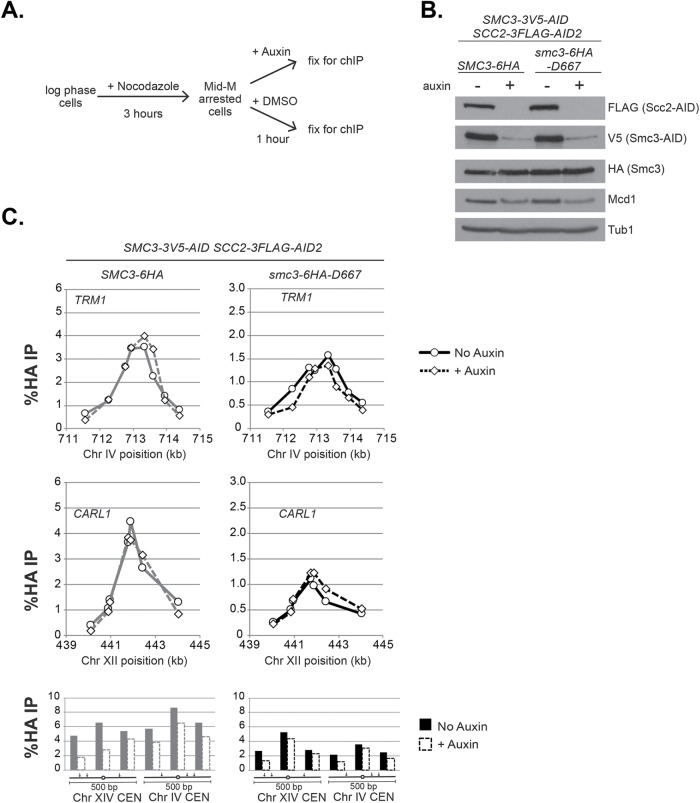FIGURE 4:
smc3-D667 supports stable cohesin binding to chromosomes. (A) Regimen used to assess stability of cohesin binding to DNA on depletion of the loader subunit Scc2p. Haploid SMC3-3V5-AID SCC2-3FLAG-AID2 strains expressing either SMC3-6HA (BRY839) or smc3-6HA-D667 (BRY841) were grown to mid–log phase and arrested in mid–M phase by incubation with nocodazole for 3 h. Cultures were split, and auxin added to one half, and then both halves were incubated for 1 h. Cells aliquots were collected to make protein extracts or fixed and processed for ChIP (Materials and Methods). (B) Western blot analysis showing depletion of AID-tagged proteins. Protein extracts (TCA lysed) of strains in A were subjected to SDS–PAGE and analyzed by Western blot. Depletion of Scc2p-3FLAG-AID (FLAG) and Smc3p-3V5-AID (V5) is shown. Antibodies assessing levels of Smc3p (HA) and Mcd1p (Mcd1) cohesin subunits and a loading control (Tub1). (C) ChIP to assess the stability of cohesin (Smc3p) binding at CARs and centromeres. Cultures of strains from A were fixed and processed for ChIP. Smc3-6HAp binding (left side) and smc3-6HA-D667p binding (right side) at CARs and centromeres in control cells (solid lines and filled columns) and auxin-treated cells depleted for Scc2-3FLAG-AID2p and Smc3-3V5-AIDp (dashed lines and open columns). From top to bottom: binding to CARs TRP1 and CARL1, and centromeres XIV and IV.

